
REIMAGINING RIVERFRONT THRESHOLD
Panjim, Goa, India
B.Arch - Thesis 2021
The urban riverfronts are recognized as locations ripe with the potential for urban revitalization. Attempting to meet the demands of public constituents and the need for a reliable economy, waterfront municipalities continue to have an advantage over their nonaquatic contemporaries. Since 18th to 19th century, many cities have transformed riverfront into commercial and recreational spaces. Historically, those sites accommodated a shipping and transportation industry with spectacular qualities, such as the dramatic scale of the ships and their ports, as well as in the active crossing of the land-water threshold. Then those spaces were diminished, obscured, or disappeared eliminated riverfront access and blocked views, and more recently, when those sites were replaced with places for public leisure. While attempts to reconnect the city with the marginalized riverfront through the creation of public space is valuable.
Rivers have played significant role in the development of Goan cities. With access to the network of trade and transportation, cities have thrived along the river’s edge. However, with changing economic trends—changes in the means of land use and transportation—as well as changes in urban values, the character of many urban riverfronts has changed dramatically.
Panjim is one of the fastest growing cities in Goa. The most emblematic evidence of urbanization is the Mandovi River. Due to heavy disturbances throughout the urbanization process, urban rivers have become one of the most intensively influenced areas in the interaction between humans and natural processes. And the rapid urbanization has also affected river water, quality of air and energy resources. Urban rivers and waterfront space are part of the urban open space and plays a vital role in affording urban resilience and health. Rivers, waterfront and open spaces should link together, by making a recreational space system that benefits people and the city. Human activities have vastly altered the structure and the function of urban river landscapes. It has resulted in the decrease of naturalness, diversity, feasibility and beauty of the urban river landscapes. Urban rivers are important physical elements and important ecological corridors. They not only play important ecological roles but also supply bases of stability, comfort, and sustainability in urban development.
The intent of the project is to work on the regional and micro level simultaneously. In regional level emphasis has been given to the existing zoning, land use, and the connection between with central commercial hub and other important sites in the city. However, at the micro level, importance has been given to the programmatic layout which will make the space vibrant and ensure safety at all times, and creates a connection between the human and river.

INTRODUCTION TO THE CITY

ASSESSMENT OF THE STUDY AREA
SPATIAL GROWTH
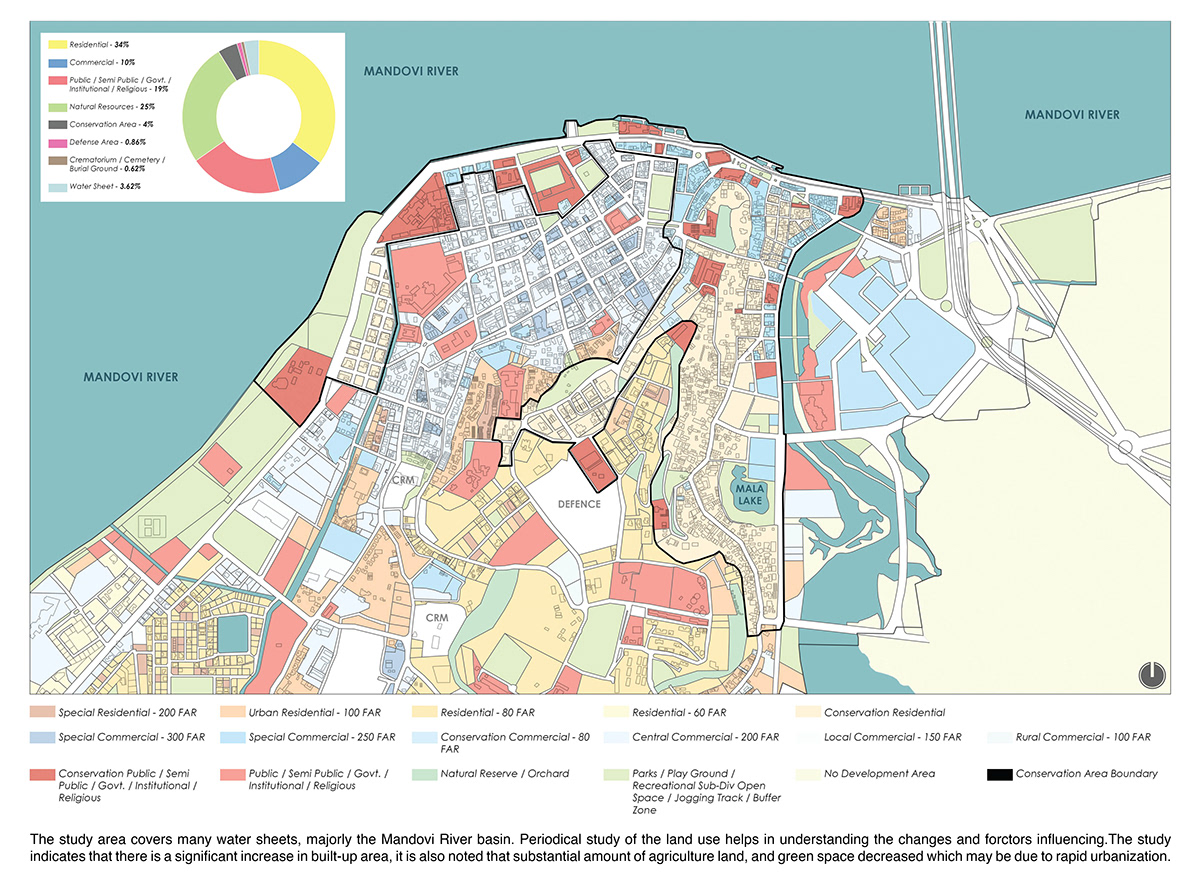
vegetation

edge condition
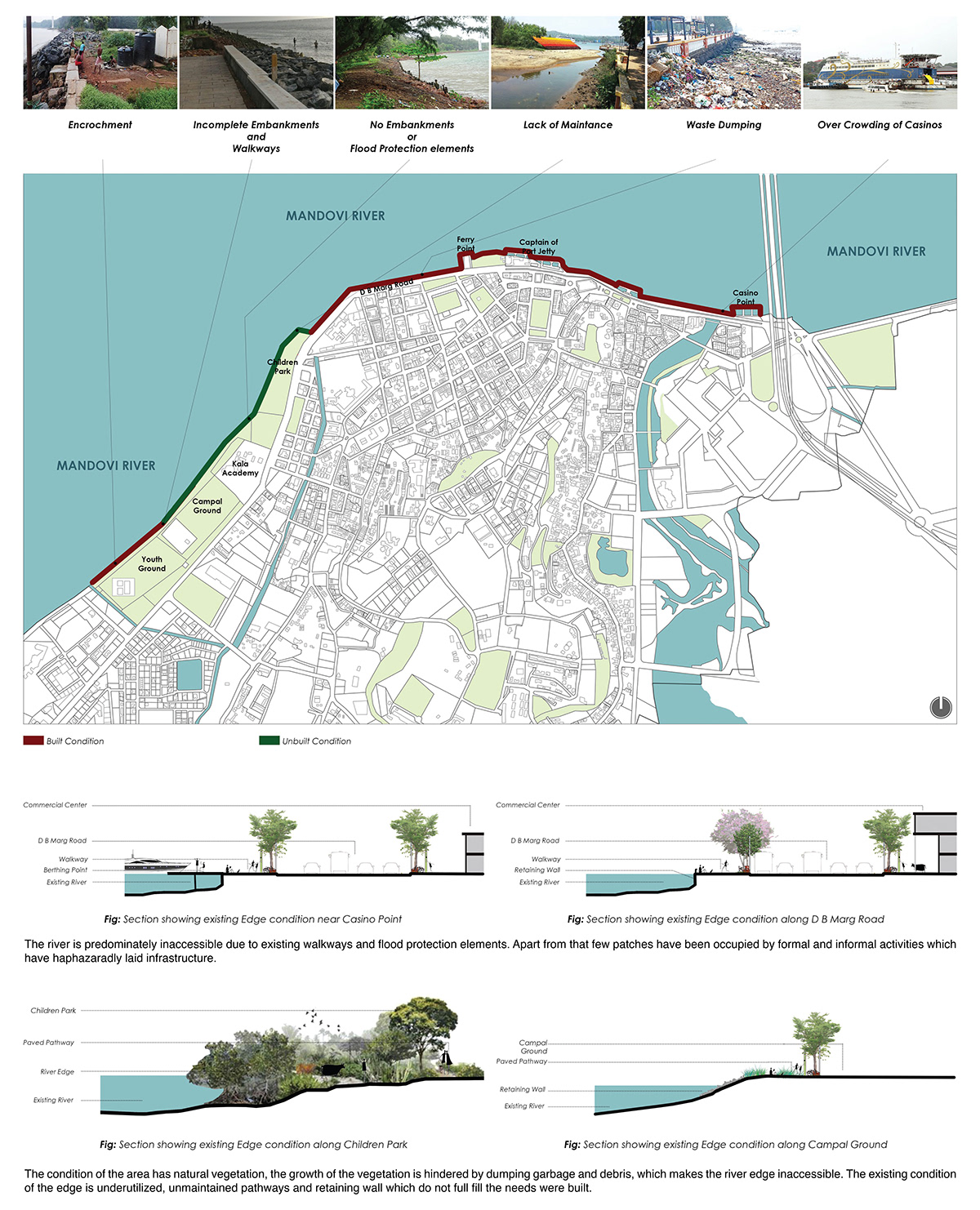
overview of assessment

design programme
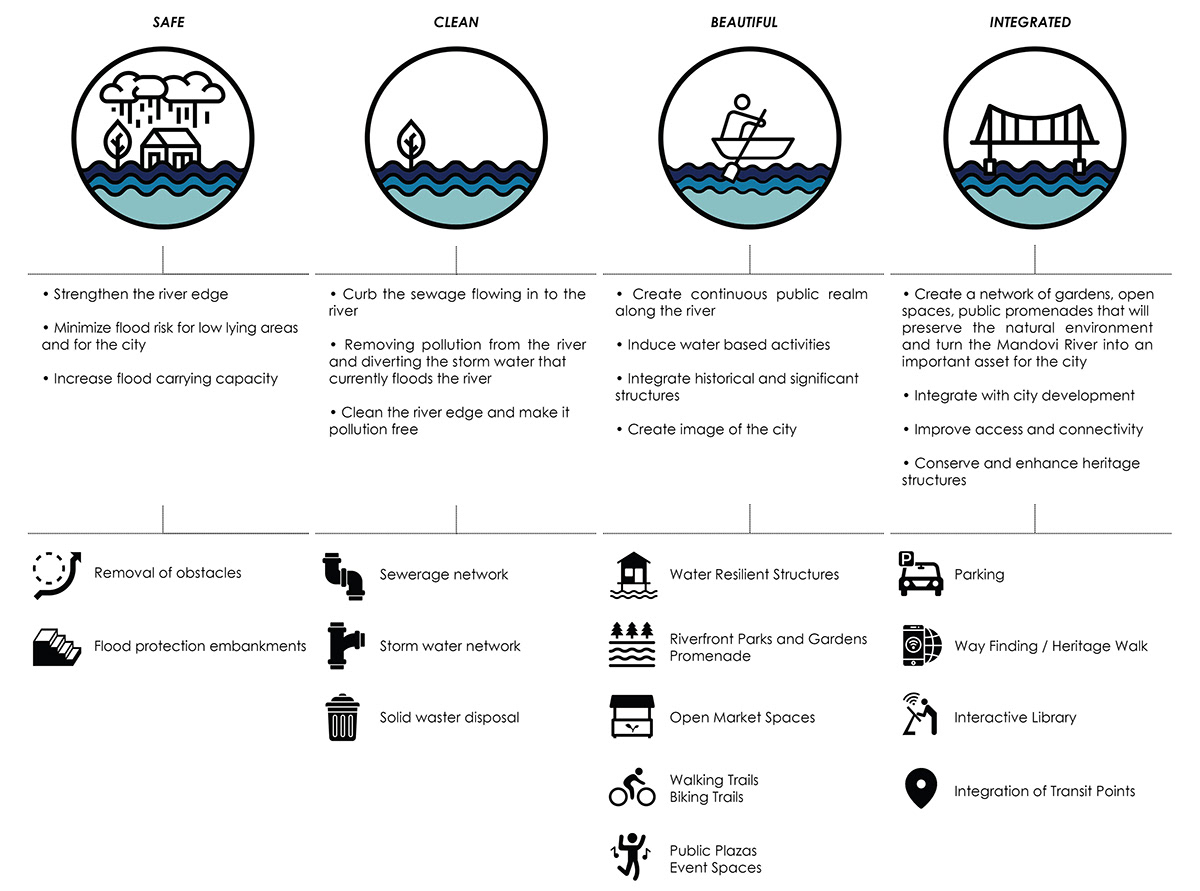
DEFINING PROJECT AREA
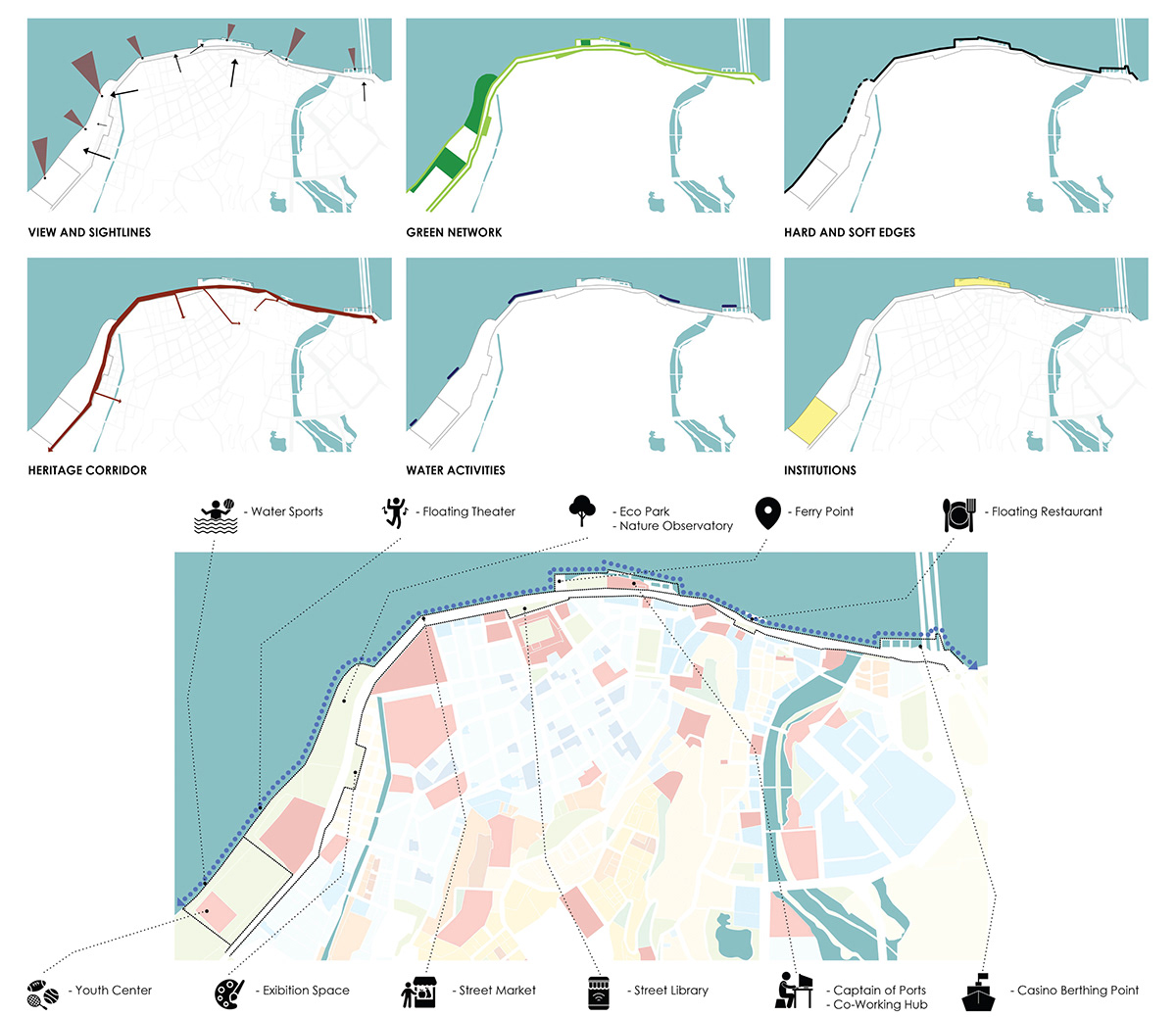
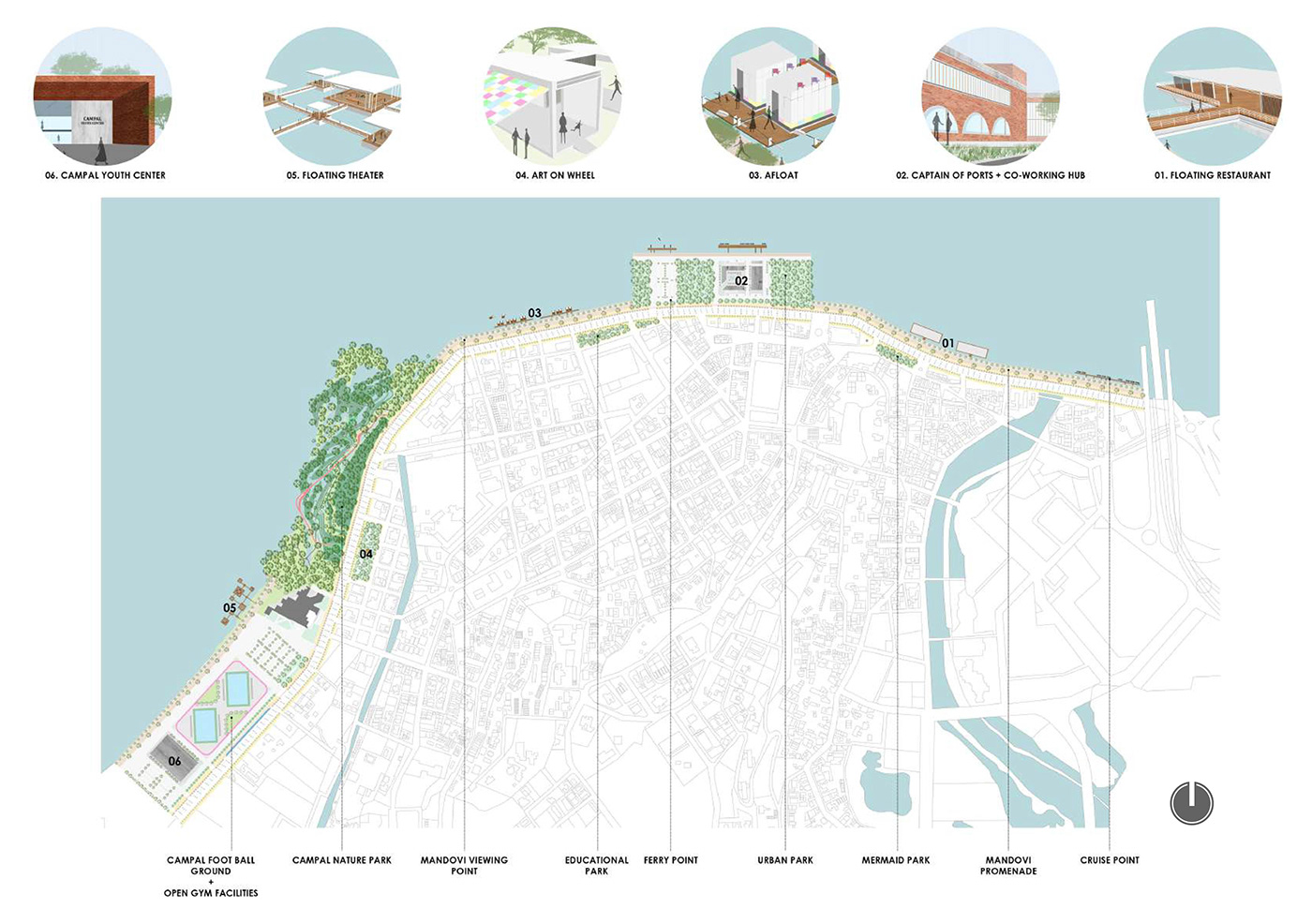
Master Plan
Area - 2 Km length along the river Mandovi
Scale - 1:2500


